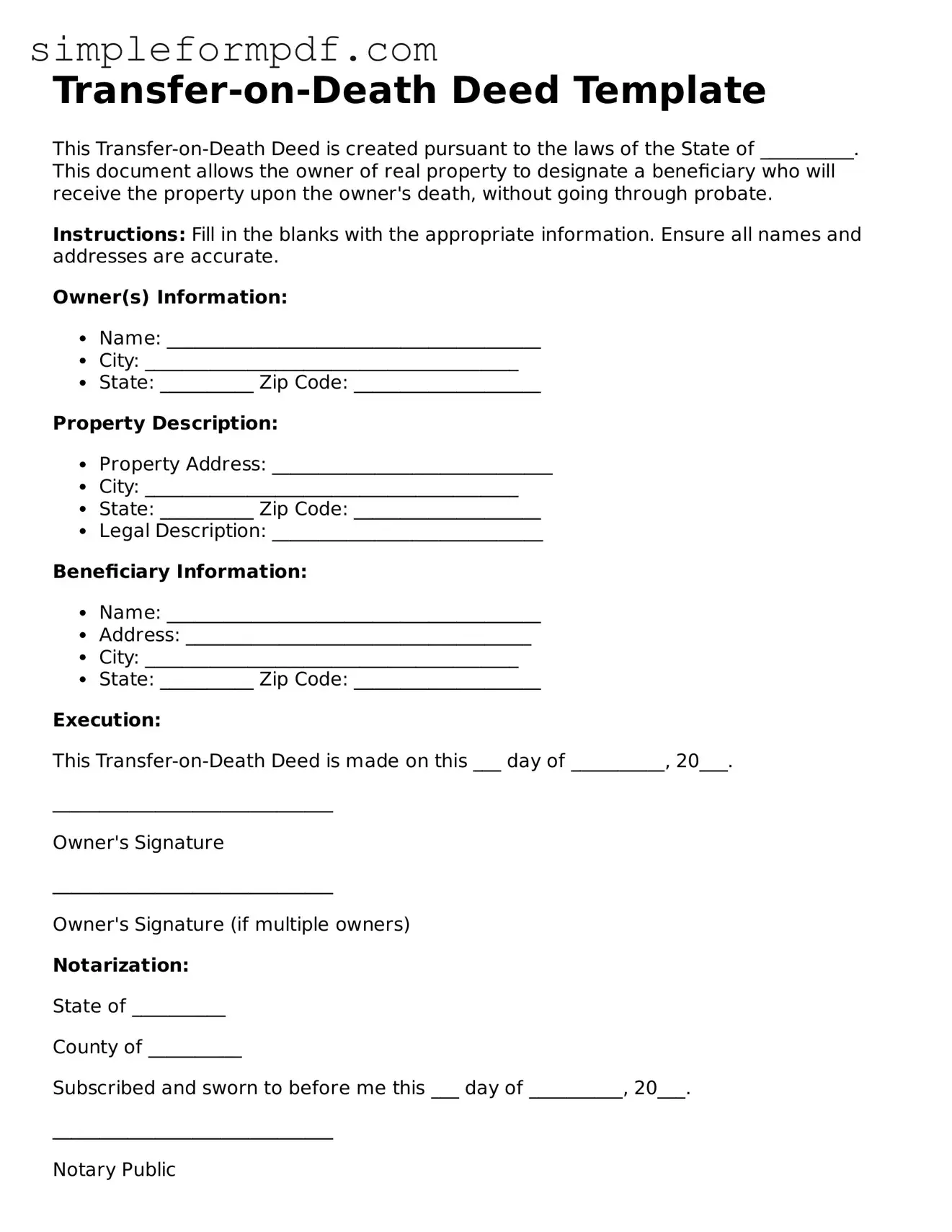Transfer-on-Death Deed Template
This Transfer-on-Death Deed is created pursuant to the laws of the State of __________. This document allows the owner of real property to designate a beneficiary who will receive the property upon the owner's death, without going through probate.
Instructions: Fill in the blanks with the appropriate information. Ensure all names and addresses are accurate.
Owner(s) Information:
- Name: ________________________________________
- City: ________________________________________
- State: __________ Zip Code: ____________________
Property Description:
- Property Address: ______________________________
- City: ________________________________________
- State: __________ Zip Code: ____________________
- Legal Description: _____________________________
Beneficiary Information:
- Name: ________________________________________
- Address: _____________________________________
- City: ________________________________________
- State: __________ Zip Code: ____________________
Execution:
This Transfer-on-Death Deed is made on this ___ day of __________, 20___.
______________________________
Owner's Signature
______________________________
Owner's Signature (if multiple owners)
Notarization:
State of __________
County of __________
Subscribed and sworn to before me this ___ day of __________, 20___.
______________________________
Notary Public
My commission expires: ________________________
